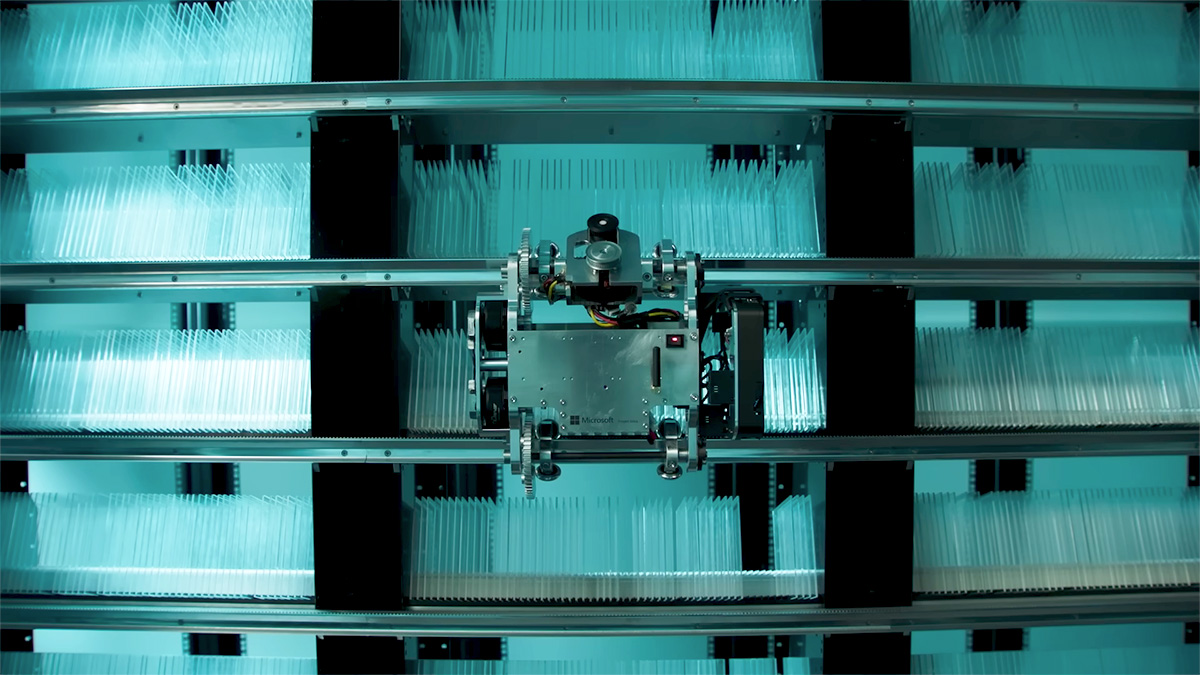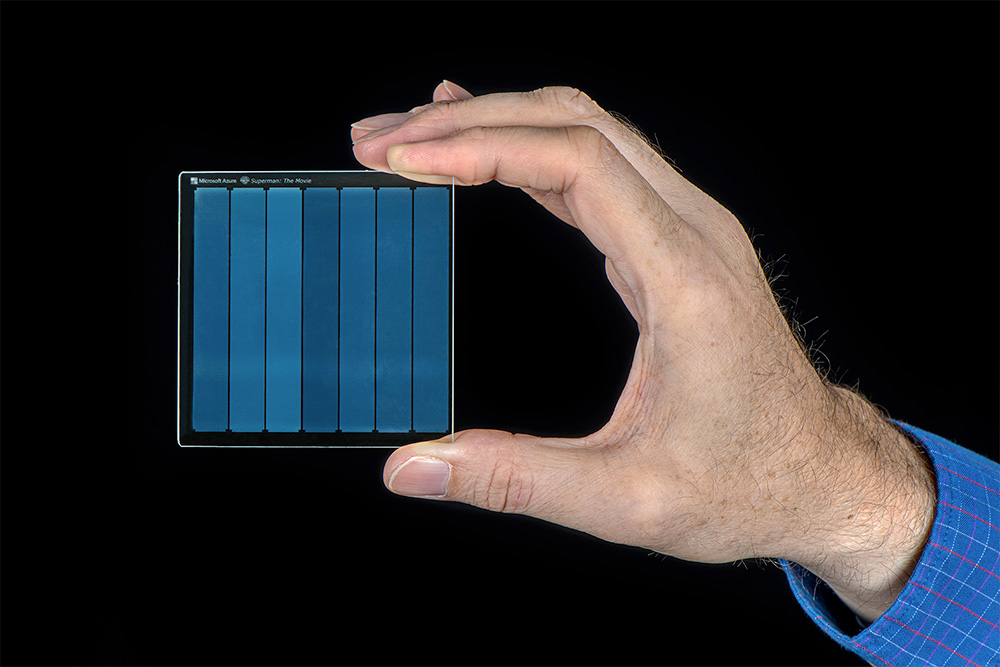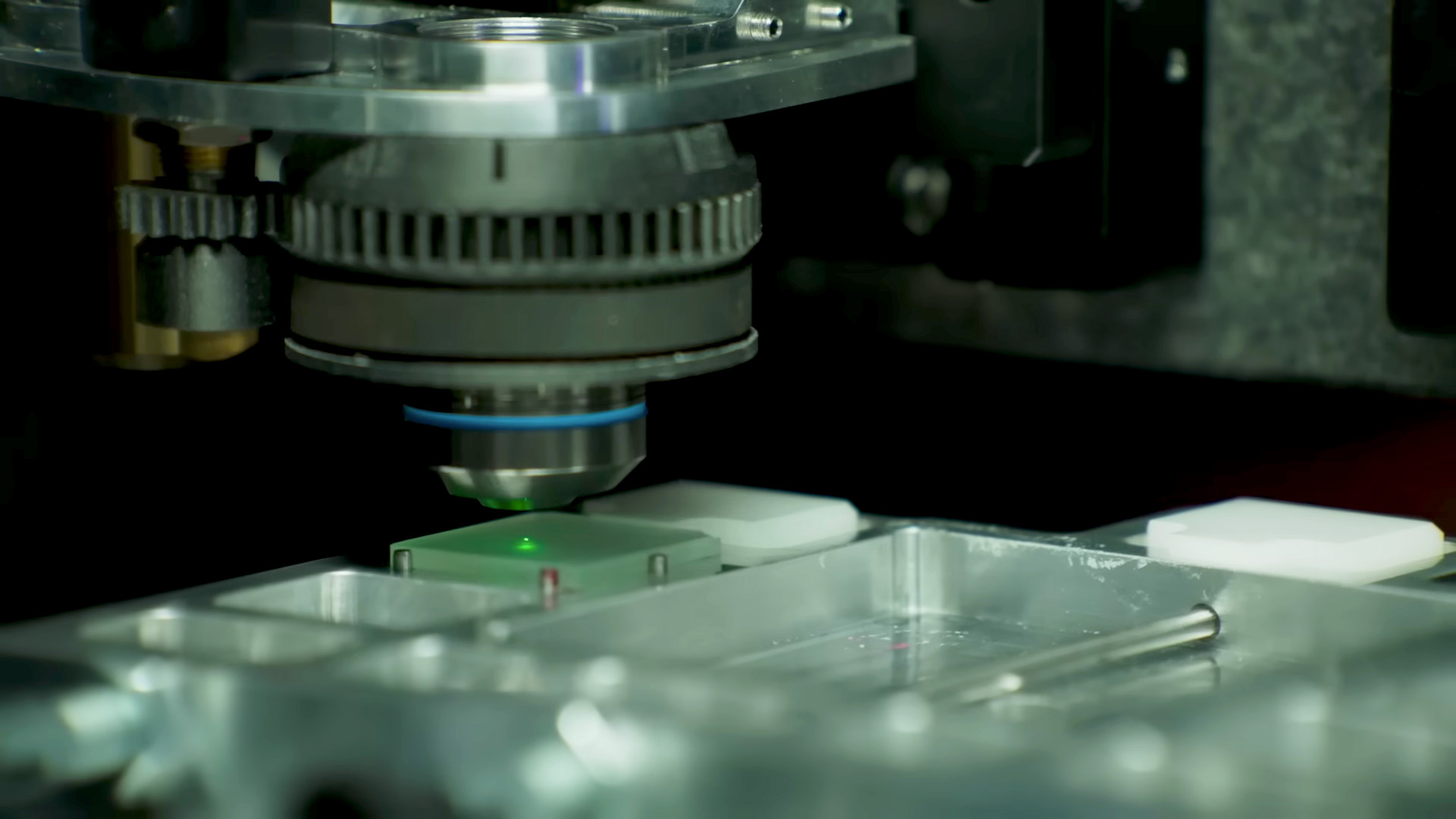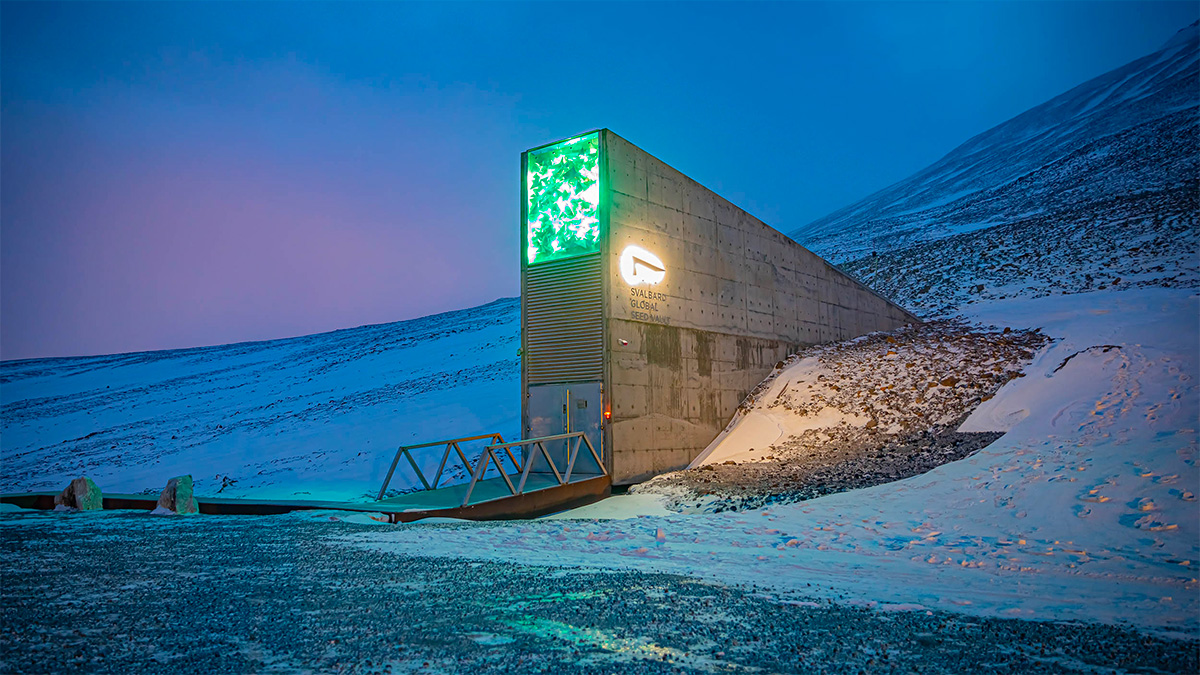
Microsoft’s R&D division is working on an innovative data storage system on glass. If successful, this project could store data without degradation for millennia.
It’s well known that the magnetic media used in traditional hard drives have a limited lifespan and require renewal to ensure storage longevity. To overcome this limitation and offer a more environmentally friendly storage solution, the company has been working on an innovative solution for several years.
Responding to the name of Project Silica, the initiative, unveiled by Microsoft in 2019, aims to store data in quartz glass plates.
This medium protects data from damage caused by water, magnets, heat, and scratches.
At that time, in partnership with Warner Bros., the tech giant managed to write and read the entire iconic “Superman” movie from 1978 on one of these plates.

Since then, Microsoft’s data storage project has evolved greatly and has become industrialized. It now allows more than 7 TB of data to be stored on a simple plate the size of a coaster (75x75mm, 2mm thick). This is equivalent to 1.75 million music tracks or 3,500 movies.
A fine-tuned technique
To achieve this feat, Microsoft Research and Azure teams have developed a sophisticated glass engraving technique. This process is performed using a femtosecond laser, which encodes information microscopically inside the glass with ultra-short pulses.
Data is encoded in the glass at the microscopic level in the form of voxels — the 3D equivalent of what pixels are for 2D — which can represent binary data.

Once the data is inscribed, a computer-controlled microscope takes over and illuminates the glass to capture changes in refraction within the material.
Azure AI performs reading and validates the correct encoding of the engraved information. The data then becomes readable, interpretable, and most importantly, usable.
The physical storage takes place in a library that looks like it’s straight out of science fiction. It operates passively without any electricity. The complexity of these storage units lies in the robots that inhabit them. Mostly dormant, they can move, climb the various shelves where the glass plates are stored, retrieve the desired plate, and bring it to the reading device.
Storage durability: Microsoft thinks ahead
The Redmond firm claims that the glass plates could maintain data integrity for over 10,000 years, with no maintenance required.
For comparison, magnetic tapes have a lifespan ranging from 10 to 30 years. Hard drives, on the other hand, typically last about 5 years before needing replacement.
Furthermore, to confirm the potential of this technology, Microsoft Research is working closely with the Elire group behind the “Global Music Vault” project. This initiative aims to preserve and protect humanity’s musical heritage throughout the centuries.
The storage devices are housed in a bunker in the middle of the Arctic. This is also where GitHub’s “Arctic Code Vault” time capsule is located, which contains a snapshot of the open-source code on the platform up to February 2, 2020.

The company does not hide its ambitions behind the Silica project and plans to adopt this new technology for data storage in its global network of data centers. If improvements were made to eliminate bottlenecks in writing speed, this would be a significant step forward. Indeed, this project could help to dramatically reduce the energy consumption and physical space required for cloud data storage.
However, although this technology is promising, Microsoft concedes that it still requires several development stages to achieve commercial deployment. Furthermore, writing, reading, and storage are currently carried out in separate laboratories, not in a single location.
Read more about Project Silica on Microsoft’s official page.
Also read on The Coding Love:
- 💸 Despite its price, GitHub Copilot costs the platform millions
- 🚘 Tesla opens its API for third-party apps in its cars
- 😵💫 To avoid neck strain, Apple is already working on a lighter VR headset
- 🐂 Ubuntu 23.10 Mantic Minotaur is now available



